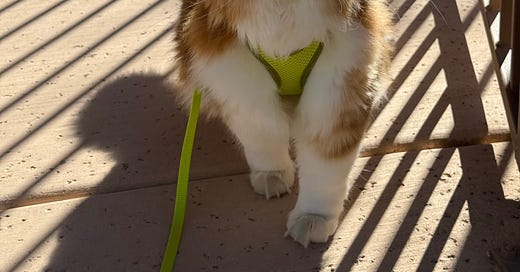Most people are happy to keep some of their money in a safe place with no volatility. A stable foundation of savings provides peace of mind, and makes it easier to tolerate risky investments in your long-term portfolio. Your emergency fund is the essential part of that foundation. It keeps you safe when Plans A, B, and C have failed.
Your emergency fund can come into play when you experience a large income shock or spending shock. An income shock is when at least one earning member of your household loses their income, partially or completely. A spending shock is a surprise escalation of your expenses. It could be due to unreimbursed medical bills, veterinary bills, home or auto repairs, moving or travel expenses. If you can plan for an expense, you should save for it on top of your emergency fund. An emergency fund is for unexpected and urgent needs. It helps you avoid:
taking on debt to fund those needs
selling investments (potentially at a loss)
paying tax penalties to withdraw prematurely from retirement accounts
Long-term income shocks are more likely to drain most people’s savings than a surprise expense. If you lose your job, you should apply for unemployment insurance right away to ensure you receive all the benefits you’re eligible for. Back pay isn’t provided aside from exceptional circumstances, so every week you delay can lead to a significant loss of benefits.
How large should your emergency fund be to prepare you for the worst? The standard recommendation is three to six months of expenses. I think that people who are building their emergency fund and have no other assets should focus on saving at least six months of normal expenses. This provides a safety net in case you suffer a long-term income shock and unexpectedly high expenses. That coincidence would be very unlucky, no doubt, but they say hell is a bottomless pit for good reason. At least you can avoid credit card debt while you’re down there.
Not everyone needs the same emergency fund. Consider a married couple with stable incomes and no kids who rent their home. They save 30% of every paycheck, have an investment portfolio currently worth a few years of expenses, and have multiple well-off family members who could help them in a crisis. Their emergency fund can be pretty light, perhaps three months of expenses (but can be larger if that makes them feel more comfortable). What about a single mother with chronic illness and no family to rely on? She works in a cyclical industry prone to layoffs, and struggles to save 10% of her paychecks under normal conditions. She should try to build a large emergency fund relative to her expenses — at least six months of expenses, including potential health care bills.
Here are some questions you can ask yourself to assess your level of need for emergency funds:
How long could you live on your savings if you sold all your liquid assets today? What if your stocks were worth half as much?
How long could it take for you to get another job if you’re laid off or fired?
How stable is your main source of income when your income isn’t zero?
How much could you reduce your expenses if you absolutely needed to?
Who else could help you pay expenses if you needed it? Would you be willing to ask? How likely are they to be financially squeezed at the same time as you are?
Is there anyone you might choose to support financially if they needed it?
Do you have health problems that could, at some point, reduce your ability to earn income for an extended period?
Do you have disability insurance? What kind of coverage does it provide?
Could you take on extra work, including gig work, if you needed to? Potential obstacles are kids, health problems, and lack of access to a car.
Do you have pets that could suddenly need thousands of dollars of surprise medical care? Do you have pet insurance? If so, what does the policy cover?
Do you rent or own your home?
The last bullet is a big one. Renters have more predictable expenses within the term of their lease, and if needed, it’s easier for a renter to downsize to a less expensive lease than for a homeowner to reduce their housing costs.
Homes have their own savings demands. If you own your home, part of your non-emergency savings should be dedicated to home-related expenses. Although you can’t predict exactly what repairs your home will need, you can predict that it will eventually need maintenance, repairs, and replacements. Your non-emergency spending and savings each year should probably add to 1-2% of the home value. That estimate doesn’t account for savings you would need if you’re planning renovations and improvements.
The amount your home adds to your emergency fund should certainly include the deductible on your homeowner’s insurance policy. It should probably also include several thousand dollars in case of a failed appliance, and perhaps more if you’re concerned about sources of damage that wouldn’t be covered by your insurance. There’s a lot of room for personal judgment here.
If you have a long-term partner or spouse, all the questions above would apply to your joint finances. A two-income household is more robust to shocks than a single person.
Save or pay high-interest debt?
What if you want to build a full emergency fund, but you have credit card debt standing in your way? Does it make sense to stack cash for an emergency fund if you’re paying a 20% or 30% interest rate?
In my view, paying off extremely high-interest debt as quickly as possible should be the priority. You should always hold enough cash to pay non-card expenses like your rent or mortgage, which lets you avoid using even more expensive credit like a cash advance. A small additional buffer of cash is a good idea, to protect you against surprises that cause your monthly expenses to exceed your income. If that happens, you can probably just increase your credit card balance again, and be no worse off than you would’ve been.
However, a thorny part of paying credit card debt is that your lender may reduce your credit limit as you pay down your balance — a practice called balance chasing. If you’ve had a high, interest-bearing balance for a long time, they have good reason to regard you as a credit risk, so they don’t want to continue extending you large amounts of credit. If that happens while you’re paying off debt, the lender is taking away the wiggle room you could need if your expenses exceed your income.
So you can’t completely rely on credit cards as a source of emergency credit while you’re paying them down. At the same time, holding a lot of cash while you have credit card debt is costly.
You can look into transferring your balance to a card with an introductory 0% interest rate, but that should be treated as a brief respite which gives you time to put out the fire. Credit card debt is a financial emergency. Unfortunately, many people sink into it by becoming too comfortable with it. You should be willing to sell non-essential belongings, work extra hours or jobs, and make other sacrifices to bring your balance to zero. I rarely make sweeping statements, but here is one I’m happy to make: you should never pay interest on credit card debt. No one should pay interest on credit card debt.
Once you’re free of super high-interest debt, you can build a full emergency fund, automate your bill payments, and avoid ever falling into a debt trap again.
Where should you keep an emergency fund?
Good question, thanks for asking. I don’t want to drone on for too long, so the second part of this post will jump right into it:
Further resources
Every Money IRL post is organized in The Omni-Post, and all vocab terms are here.
The YouTube channel Two Cents has a good video on the benefits of an emergency fund.
Check out this interesting piece from The White Coat Investor on why you may not need an emergency fund. It’s true that not everyone strictly needs one. I think that for most working people, the psychological benefit alone of having some money that’s earning boring, stable interest is worth it. It helps them stay on the roller coaster of more volatile investments.
—
We love comments here. Tell us what you like or dislike, agree or disagree with. Recall a long story barely related to this post. Ask a question!
Please send photos of your pets if you’d like to see them in future posts. Or suggest a new topic, or say hi! You can email or tap the message button. Stay safe out there.
Email: bright.tulip711@simplelogin.com
—







Great tips!
As usual, GREAT post with some really great suggestions and comments. I especially like the idea of saving where I can't "see it," so I avoid the temptation to spend it! :)